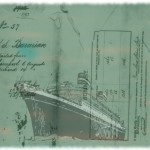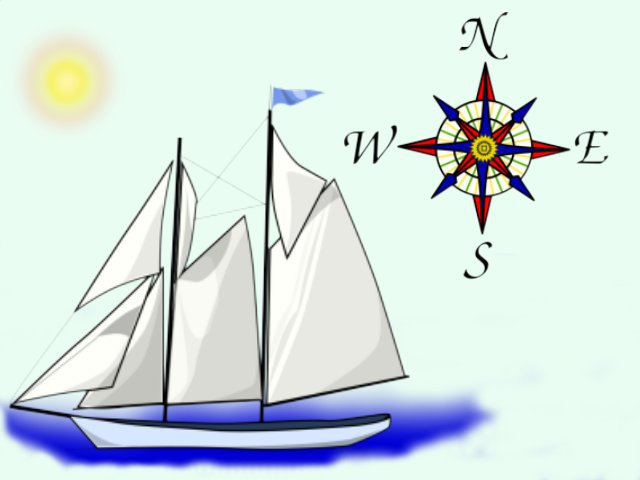Search results
Volunteers Needed at FamilySearch
August 31, 2012 by ramona
Filed under Articles, Family Search The LDS, Latest News
 FamilySearch is in the news again with a new project that promises to be one of the most exciting yet for genealogy beginners.
FamilySearch is in the news again with a new project that promises to be one of the most exciting yet for genealogy beginners.
The new project focus is to index U.S. Immigration and Naturalization records as well as passenger lists, border crossing records and passports. The ultimate objective to indexing these records is to make them freely available for family tree enthusiasts looking for their immigrant ancestors.
The variety of information family history hunters can hope to discover from these records includes:
- Ancestor’s Names
- Names of Family or Friends they traveled with
- Place of birth
- Date of immigration
- Date and location of naturalization
- Port of origin
- Port of entry
- Name of ship
To reach this goal FamilySearch is once again inviting the genealogy community to join in and help with the indexing. You do not have to be a professional genealogist, in fact, all you need to do if you would like to become a volunteer on this project is register, sign in and download the indexing software.
To find out more details visit https://www.familysearch.org/us-immigration-naturalization/?icid=fsHomeUSImmNatTxt
Ships Lists: Free Genealogy Resource
August 5, 2012 by ramona
Filed under Articles, Genealogy Research Resources, Latest News, Sharing Genealogy Information
 Genealogy beginners looking for immigrant ancestors should head straight over and bookmark The Immigrant Ships Transcribers Guild (ISTG) website.
Genealogy beginners looking for immigrant ancestors should head straight over and bookmark The Immigrant Ships Transcribers Guild (ISTG) website.
The ISTG is a volunteer group that has been working since 1998 to transcribe ships lists on a global scale and publish them on the internet. In the years since its inception, the ISTG website has grown to include volumes of passenger manifests.
The scale of the site may make navigating it a little intimidating to the novice family history hunter. A short tutorial will help make things a little easier.
How to Search the ISTG
Step one:
Locate the search box on the upper left hand corner of the opening page and enter the surname you are researching. This should move you forward to a page with a long list of matches.
Step Two:
On the upper right hand corner of the page, you will find an option for advanced searches…click the option.
The advanced search will give you four text boxes
1. All – will return pages that include all of the terms entered
2. Phrase – will return pages matching the exact phrase
3. Any – will return pages that match any of the terms – in no specific order
4. None – includes other selected items and must be used in tandem with other fields
For example, entering “Alexander McCallum” into the “All” field returns ships named Alexander as well as passengers surnamed Alexander and McCallum.
The same search entered in the “Phrase” field returns only passengers named Alexander McCallum.
In the Any field these search terms return the same results as entering into the “All” field. It is good to use the “None” field in tandem as you can enter terms you do not want matched in order to narrow your search.
Once you are comfortable using the search function you will be free to search some of this sites great free resources from Jacobite rebellion ships to New York arrivals.
One great feature of this site that you will not want to miss is the ISTG compass, which is a tool to simplify your searches by breaking down resources into consumable information bites.
The ISTG is another site that relies heavily on volunteer transcribers, if you would like to help check out their Guild Application for more information.
Make sure you are prepared for your visit to The Immigrant Ships Transcribers Guild with Genealogy Beginners Family Tree Starter Kit, available with your 30-day free membership.
Searching for Immigrant Ancestors
June 16, 2012 by ramona
Filed under Articles, Getting Started in Genealogy, Introduction to Genealogy, Latest News
 Unless you are of aboriginal descent, your ancestors came to North America as immigrants.
Unless you are of aboriginal descent, your ancestors came to North America as immigrants.
Europeans have been making the journey to North American shores since the first recorded settlement by Vikings in L’Anse aux Meadows (Newfoundland, Canada) in 1000 AD. Although colonization truly did not begin until 1492 when Columbus headed his Spanish expedition in search of trade routes and instead found a new land.
In the following centuries, the North American population grew with immigrants of all races and nationalities. From those seeking religious freedoms to those who suffered forced immigration. They came by ship in droves and ever since, we have been looking back, seeking our immigrant ancestors.
The Immigration Brick Wall
For many beginning genealogists this is the point where they first encounter a brick wall in their research. Up to this point, the search for records has been confined to home shores and filling out the spaces on family tree charts has gone relatively smoothly. Then all of a sudden your ancestors disappear from the records… and you do not know where they went.
This is often the point in family history research where new researchers first come across an immigrant ancestor. Unless family bibles and/or stories offer a clue, it leaves researchers asking the questions. Where do I look now, who am I looking for and when did they emigrate?
Immigration and Name Changes
Before you can know where and when to look you will need to know who it is you are looking for. This may sound like a silly statement however; it is not unusual for immigrant ancestors to change their names. Name changes happened for a multitude of reasons from letter combinations and symbols that were not compatible with the English language to a desire to sound more American.
For example, you may have found a family patriarch listed in North American records as John Weaver but if he emigrated from Germany, you may actually need to be searching for Johan Webber.
Where to Begin Your Search
If the ancestor you are hunting for came from overseas, you may not have a birth or marriage record to answer the question of where they came from. Three excellent sources to consult should this be the case are:
- Census Records (which could also give you a clue as to when they emigrated)
- Death Records (if country of birth is not listed the names of listed parent could offer a clue)
- Newspapers (Wedding and anniversary announcements in addition to obituaries often contain biographical information that could aid in pinpointing your ancestors country or birth)
When Did They Emigrate
Your best starting point for unearthing the date of your ancestors emigration is the census records. The first census for the United States was taken before the ratification of the American Constitution in 1790. Since then a Census was taken every ten years.
In Canada, the first census occurred in 1666 in what was then New France. However, the first national census was not taken until 1871 and was followed by subsequent enumerations every five years. Locating the first census your ancestor was found in should help narrow down your search for an emigration year.
Once you have the data your next step is to begin locating records of immigration and ships lists. A visit to Library and Archives Canada or the US National Archives should be your first stop, as they will direct you to further research sources.
Do not forget to sign up for a 30-day free trial membership to Genealogy Beginner and download your complimentary family tree charts and research tracking forms.

